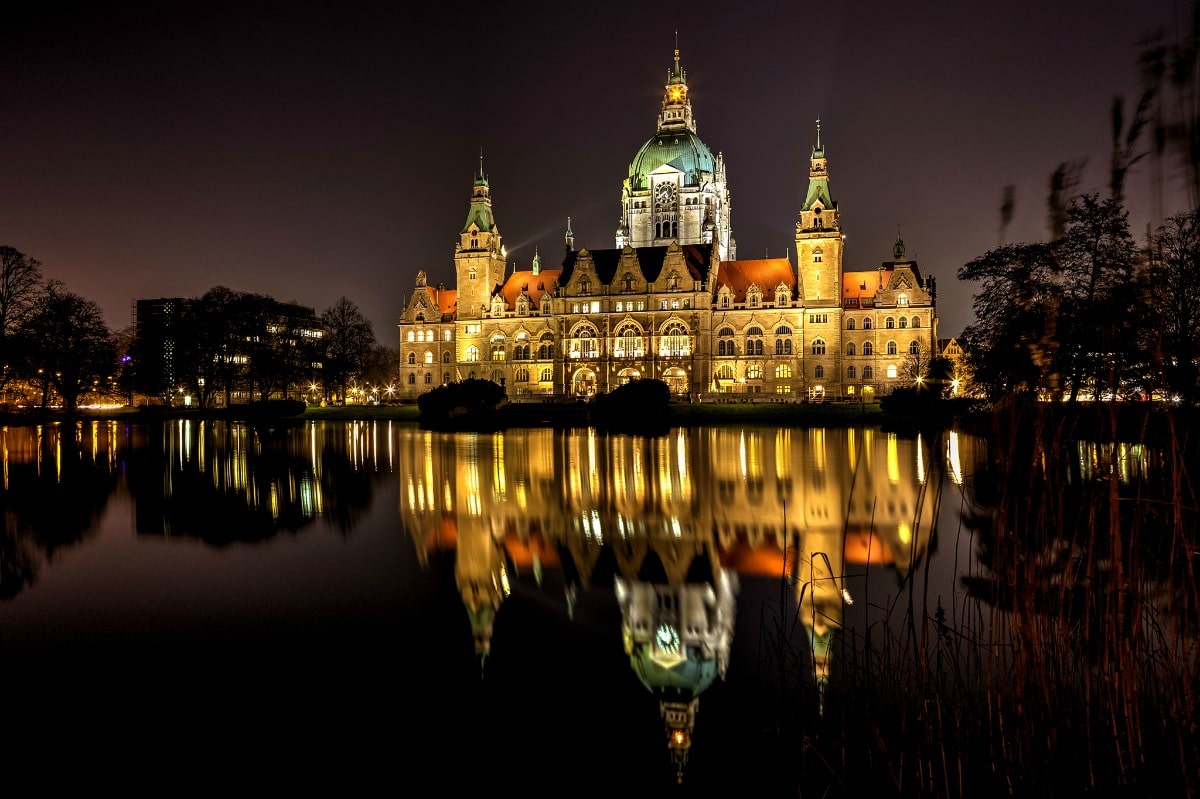“Why would you want to go there? There’s nothing to see!” This was the usual reaction after I announced my plans to travel to Hannover in northern Germany. Truth be told, it wasn’t on my bucket list of must-see cities either, but a good friend kept inviting me and I had run out of excuses. With high energy (and low expectations) I set out to discover this fascinating, yet both nationally and internationally dismissed city.
Organized Attractions Await Along the Red Thread
“Just follow the Red Thread,” the friendly gal at the tourist office told me, indicating the 2.6 mile-long red line painted on the pavement to guide visitors around the city. Although I feel a bit like Dorothy following the Yellow Brick Road as it weaves me in and out of the highlights, it turns out to be the perfect way to see 36 attractions in an organized fashion (it is Germany, after all).
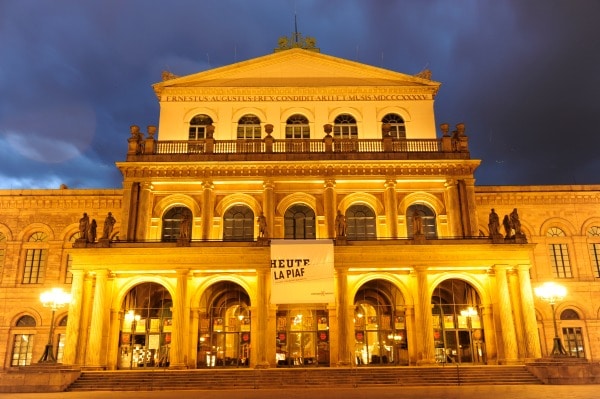
Photo by Martin Kirchner
It’s hard to resist the temptations of upmarket shopping street Luisenstrasse, but I swiftly head to the Opera House, built in 1852, and home to a world-class State Ballet. The beautiful neoclassical building, which was rebuilt in 1948, is in stark contrast to the sinister atmosphere of the Aegidienkirche, a bombed-out church with ruined walls and no ceiling.
The Allied air raid of 1943 damaged the church badly and it now stands as a memorial to the victims of war and violence. Inside hangs the peace bell, cast in 1985 and presented to Hannover by its Japanese twin city, Hiroshima. Visitors can hear the bell toll at 9:05am, 12:05pm, 3:05pm, and 6:05pm. It is also rung at an annual memorial service on August 6th in remembrance of the dropping of the atomic bomb on Hiroshima.
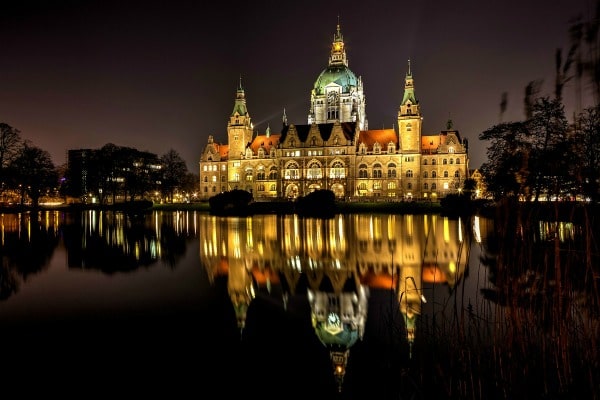
Photo Courtesy of Hannover Marketing Tourism Office
Only a block south is the New Town Hall, a handsome Baroque building. Built on a foundation of 6,026 beech piles and crowned with a domed tower, it’s one of Hannover’s most iconic landmarks. Inside, three-dimensional models of the city at different points in history are displayed and a ride to the top in a one-of-a-kind curved lift that ascends at an angle of 17 degrees off vertical when it gets there, promises the best views in town.
Walking along the Leine River, three brightly colored sculptures, the Nanas (girls), catch my eye. The joyfully dancing sculptures are the work of French artist Niki de Saint Phalle. Initially met with intense public dislike, the ‘buxom girls’ are now proud mascots of the city. Each Saturday (8am-4pm), they’re surrounded by one of Europe’s oldest flea markets, which takes place on Leibnizufer, on the left river bank.
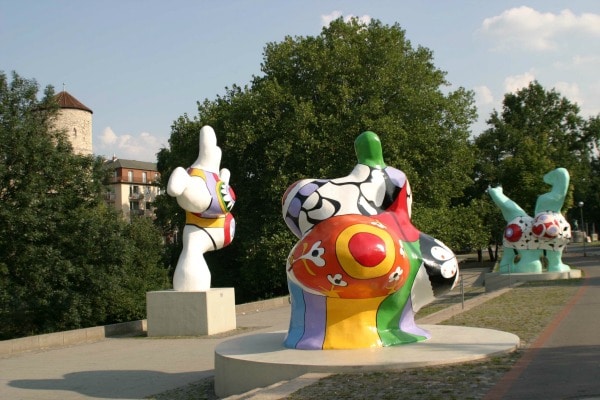
Photo Courtesy of Hannover Marketing Tourism Office
Hannover had to reconstruct itself after 80 RAF bombing raids during the Second Word War. More than 95% of it was destroyed, and the 16th and 17th-century half-timbered buildings in the Old Town were painstakingly restored from the rubble. The imposing Gothic Market Church was faithfully rebuilt in 1952, although with a smaller spire because the money ran out, I’m told. In front of it stands the bronze statue of Martin Luther, an icon of the Protestant Reformation which will have its 500th anniversary in 2017.
The Red Thread guides me next to the 14th-century Kreuzkirche which features a valuable Passion triptych by Lucas Cranach from 1537 at the high altar.
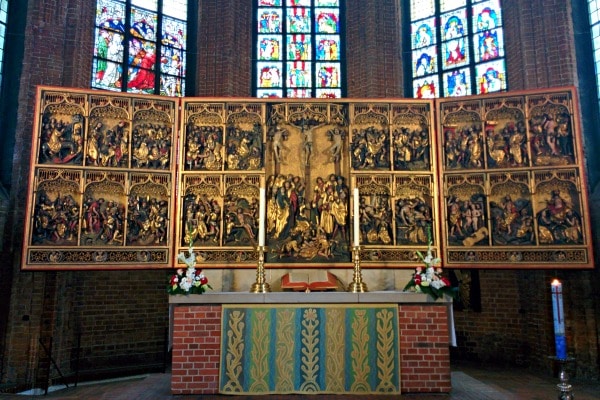
Photo by Wibke Carter
On Ballhofplatz, I stumble upon an ivy-covered building. “The Teestübchen is an institution in Hannover,” a local standing nearby tells me after noticing my interest. I’m sure Andy Warhol, Joseph Beuys and countless other artists, who also had a cup of tea here, would agree.
The Leine Palace, situated on the Leine River, is the former residence of the Hannoverian kings and current seat of the Landtag (government) of Lower Saxony, while the Old Town Hall, built over a period of more than 100 years, is no longer used as the administrative seat but houses businesses and the registry office.
Just as I’m about to faint from hunger, the historic Markthalle comes into view. Nicknamed ‘The Belly of Hannover’, this is where butchers, bakers, cheese mongers and grocers sell their fresh produce. I have a “Fischbrötchen”, a pickled herring in a roll. Just like their Dutch neighbors, the northern Germans love fish in all shapes and forms.
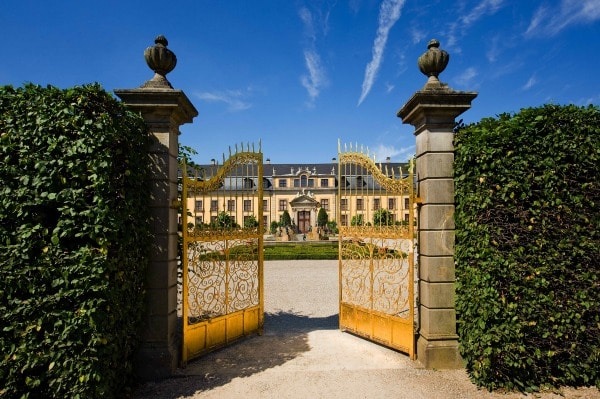
Photo by Martin Kirchner
Discoveries Beyond the Red Thread
The track ends at Kröpcke, the center of the city where the streets Georgstraße, Karmarschstraße, Bahnhofstraße and Rathenaustraße cross. As there is still plenty of time left in the day, it’s a tough call between heading to Hannover Zoo, one of the best in the country, or to Herrenhausen Gardens. I catch the metro and emerge at what is also known as the German Versailles. The extensive and formal Baroque gardens, featuring never-ending box hedges, golden statues and tinkling fountains, were the brainchild of Electress Sophia, the mother of George I. The historical links between Hannover and Britain are strong due to the fact that from 1714 until 1837, the king of Hannover was also the British monarch.
As it was 300 years ago, Herrenhausen is one of the finest gardens in Europe. Most of it is meticulously preserved and historically accurate, but there is one modern touch, the Grotto, a gorgeous hideaway lined with mosaics and mirrors designed by Niki de Saint Phalle of the Nanas fame. The Museum Schloss Herrenhausen gives a great background to the gardens themselves, but also the Hannoverian royal line and life in that era. “One of my favorite places at Herrenhausen is the Arne-Jacobsen-Foyer by the Danish star architect,” says Dennis Bohnecke, Director of the GOP Varieté-Theater.
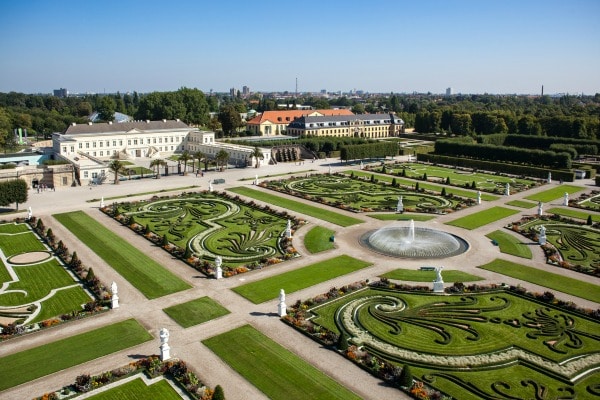
Photo Courtesy of Hannover Marketing Tourism Office
As I sit down for a traditional German dinner of roast suckling pig, red cabbage and potato dumplings in the Broyhan Haus, Hannover’s oldest pub, I contemplate the day. Despite everything I’ve seen, I feel like I’ve barely touched the surface. There is still so much to discover like the Sprengelmuseum, home to one of Germany’s most important collections of modern art, Maschsee, a man-made lake under the Nazi regime, or Eilenriede, the largest inner-city forest in Europe. For now, I have to go, but it certainly is Auf Wiedersehen, Hannover – See you again! My friend will be pleased.
The country code for Germany is 49 and the local area code for Hannover is 511.
Where to Stay:
Kastens Hotel Luisenhof – Five-star hotel with character, style, charm and modern comforts, right next to the main railway station and the best shopping streets. Luisenstraße 1-3, Hannover, +49 511 30440; www.kastens-luisenhof.de/en/
Dormero Hotel – Located in the heart of the trade fair city of Hanover, here varnish meets natural stone complemented by unusual details. This hotel is best when visiting for big fairs or trade exhibitions. Hildesheimer Str. 34, Hannover, +49 511 544200; www.dormero.de/en/hotel-hannover
Where to Eat:
Broyhan Haus – In a city with a noble tradition of brewing, Hannover’s oldest pub specializes in local beers and hearty German cuisine with lots of meat dishes. Kramerstraße 24, Hannover, +49 511 323919; www.broyhanhaus.de
Teestübchen – If you like tea, you’ll love the Teestübchen on historical Ballhofplatz. More than 40 different varieties are on offer, served with biscuits, cakes and small snacks. Ballhofpl. 2, Hannover, +49 511 3631682; www.teestuebchen-hannover.de
11a Restaurant – With simple décor, but excellent international food, this restaurant is a locals’ favorite, located in the Bohemian suburb of Linden. Try the new red wine and white pepper pralines made after a French recipe. Am Küchengarten 11A, Hannover, +49 511 5901111, www.11a-restaurant.de
What to Do:
Red Thread (Roter Faden) – Follow the red line painted on the pavement for 2.6 miles as it weaves its way through the city center joining up 36 attractions. Pick up a brochure at the Tourist information or download the “Roter Faden” app for your iPhone or iPad. http://www.hannover.de/en/Tourism-Culture/Places-of-Interest-City-Tours/City-tours/The-%22Red-Thread%22-Hannover
Herrenhausen Gardens – Stroll through Hannover’s most famous attraction, a striking example of grand horticultural style for more than 300 years. http://www.visit-hannover.com/en/Sightseeing-City-Tours/Tourist-Highlights/Herrenhausen-Gardens
Hannover Zoo –Established in 1865, more than 1.5 million people visit Germany’s fifth oldest zoo annually, considered to be one of the best in Europe and famous for its elephant breeding program. www.zoo-hannover.de/en
Sprengelmuseum – With an extensive collection of works of contemporary artists like Andy Warhol, Paul Klee, Pablo Picasso and Marc Chagall, this museum offers the best of 20th and 21st-century art. www.sprengel-museum.com

